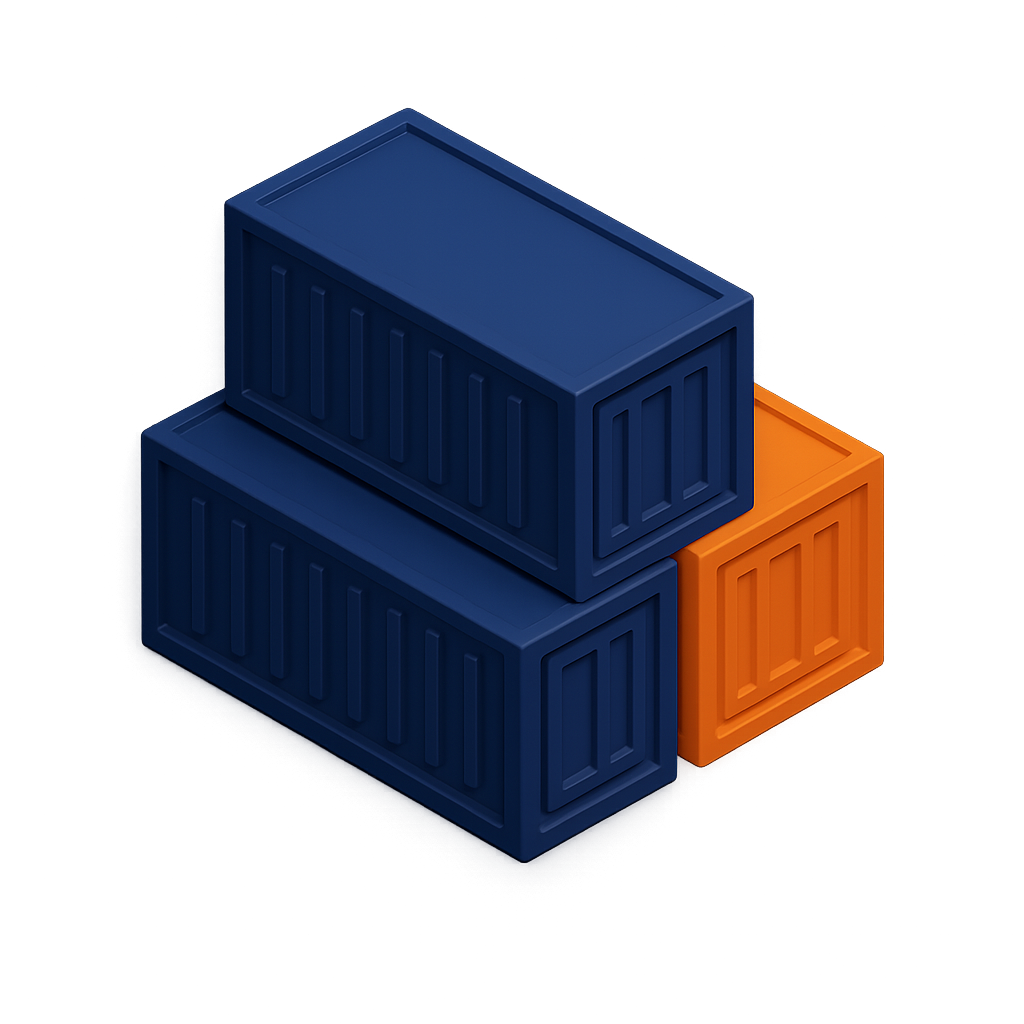Shipping Container Price Comparison: What’s Trending in the Market?

Introduction
Wondering how much a shipping container costs these days? Whether you’re planning to store equipment, build a tiny home, or start a mobile business, knowing what drives container prices is essential.
In this guide, we break down pricing trends, real-world averages, and what to watch for in 2025 to help you make a smart purchase.
Factors That Influence Container Pricing
New vs Used
- New (One-Tripper): Prices range between $3,500–$7,000+
- Used (Wind & Water Tight or Cargo Worthy): Typically $1,800–$4,000
New containers come at a premium due to condition and durability, while used ones offer savings with some wear.
Size and Type
- 20ft containers are cheaper and easier to transport.
- 40ft containers offer better value per cubic foot.
- High Cube, Reefer, Open-Top, and Side Door units often cost more due to customization or insulation.
Location and Delivery Costs
Shipping costs can significantly affect final pricing:
- Delivery within city limits: $200–$500
- Remote or difficult terrain: $600+
Always include delivery in your total budget.
Market Demand and Supply
- Global events (like COVID-19) impact availability.
- Rising demand from construction and housing sectors keeps prices high.
Current Average Prices (2025)
Based on national trends:
20ft Standard Container
| Condition | Average Price |
|---|---|
| New | $3,500–$4,500 |
| Used (WWT) | $1,800–$2,800 |
40ft Standard Container
| Condition | Average Price |
|---|---|
| New | $4,800–$6,000 |
| Used (WWT) | $2,500–$3,800 |
High Cube and Specialty Containers
| Type | Average Price Range |
|---|---|
| 40ft High Cube (New) | $5,200–$6,800 |
| 20ft Reefer (Used) | $4,500–$6,000 |
| 20ft Open Side (New) | $4,000–$5,200 |
Price Trends Over the Last 5 Years
Post-Pandemic Price Surge
Between 2020 and 2022, prices spiked by 100–200% due to:
- Port backlogs
- Shipping delays
- Soaring freight costs
2024–2025 Stabilization
By late 2023, container prices began normalizing. In 2025:
- Prices are 20–30% lower than peak pandemic rates.
- Supply chains have stabilized.
- Buyers are more price-conscious, driving competition.
Regional Price Variations
Urban vs Rural Areas
- Urban: Higher demand means more supply and better pricing.
- Rural: Limited supply can lead to higher delivery fees.
Coastal vs Inland Access
Coastal cities like Los Angeles, Houston, and Savannah tend to have lower prices due to easier port access.
Inland cities (like Denver or Boise) may see $400–$800 price increases due to transport costs.
Tips to Get the Best Price
Buy in Bulk or During Off-Season
If you’re purchasing multiple units, ask for volume discounts. Prices also tend to dip during winter when demand slows.
Work With a Reputable Supplier
At First Choice Shipping Containers, we offer transparent pricing, nationwide delivery, and custom quotes—no hidden fees.
Consider Slightly Damaged Units
For basic storage needs, “As-Is” containers can be 30% cheaper. Just ensure there are no holes or major floor damage.
When to Buy vs Rent
| Situation | Recommendation |
|---|---|
| Short-term project (<6 months) | Rent |
| Long-term storage or mods | Buy |
| Remote area with frequent use | Buy |
Renting costs $75–$250/month, depending on size and location. Buying may be more cost-effective long-term.
Conclusion
Shipping container prices in 2025 are more balanced than during the pandemic peak, but savvy buyers should still watch for delivery fees, seasonal deals, and regional fluctuations.
Whether you’re going with a 20ft budget option or a custom high cube container, understanding market trends helps you get the most value.
Need a personalized quote or help picking the right unit? Reach out to us at First Choice Shipping Containers — we’ve got you covered coast-to-coast!
FAQs
1. Why are shipping container prices still high compared to pre-2020?
Because of residual supply chain issues and increased demand in housing, retail, and agriculture sectors.
2. Is it cheaper to buy containers near a port?
Yes. Ports often have surplus inventory and reduced delivery costs.
3. Do used containers require maintenance?
Occasional repainting or rust-proofing may be needed, but they’re generally low-maintenance.
4. Can I negotiate container prices?
Definitely. Especially if you’re buying in bulk or off-season.
5. How long does delivery usually take?
Most containers are delivered within 7–10 business days, depending on availability and location.

